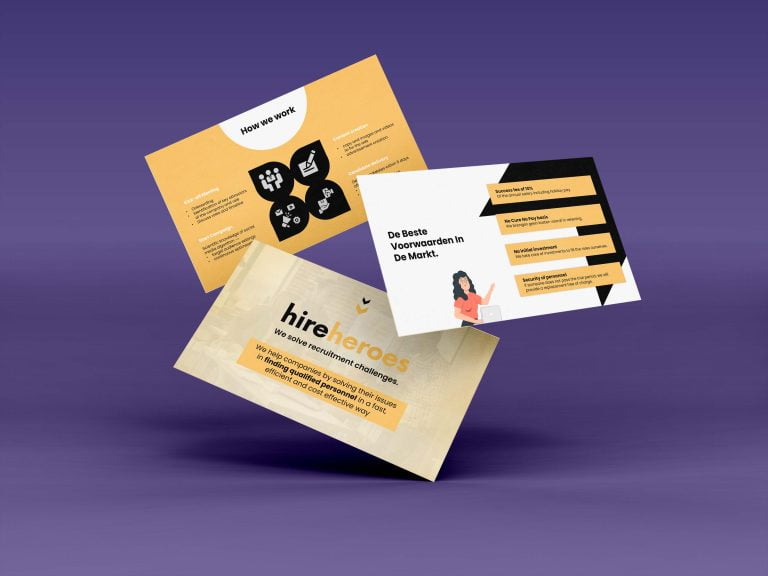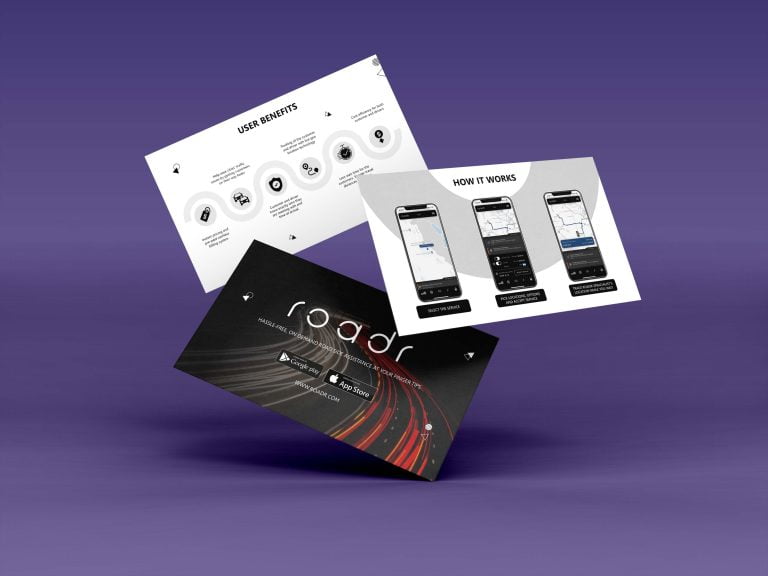Delivering a presentation can feel overwhelming, especially when you’re standing in front of an audience and trying to get your message across clearly. Many people struggle with keeping their audience engaged, organizing their thoughts, or even just managing nerves. It’s easy to feel lost when you’re unsure where to start or how to end.
But don’t worry, there’s a simple process to help you deliver a strong, effective presentation. By breaking it down into seven easy steps, you’ll be able to improve your presentation skills, connect with your audience, and feel confident every time you step on stage.
If you’re ready to master the stage and deliver presentations that impress, keep reading below to learn how you can apply these steps!

Step 1: Know Your Audience
When it comes to delivering an effective presentation, understanding your audience is key. Before you even start preparing your slides, you need to know who will be listening. Whether you’re presenting to students, business professionals, or a general audience, tailoring your content to match their expectations can make all the difference.
Understanding Your Audience’s Expectations
The first step is to research your audience. Find out their demographics, like age, profession, and interests. Are they beginners in the topic or experts? What are their goals or concerns? Understanding these details helps you shape your presentation style, tone, and content. For example, if you’re presenting to a group of tech experts, you can dive into more technical details. However, if your audience is new to the topic, you’ll want to simplify your message, using visuals and examples they can relate to.
By tailoring your presentation to meet your audience’s expectations, you ensure that your message resonates and keeps them engaged. Remember, a great presenter is one who speaks to the audience, not at them!
Step 2: Structure Your Presentation
A well-structured presentation is essential for delivering your message effectively. Without a clear plan, your audience may get lost or confused, reducing the impact of your ideas. Organizing your content properly ensures your points are understood and remembered. Think of your presentation like a story with a beginning, middle, and end, guiding your audience through the information step by step.
Creating a Clear Outline
Start by creating a simple outline that includes an introduction, the main body, and a conclusion. The introduction should set the stage by explaining what your presentation will cover. The main body dives into the core content, broken into clear sections. Finally, the conclusion should summarize your key points and leave a lasting impression. Using bullet points is a great way to keep things clear and easy to follow, both for you and your audience.
Incorporating Visual Aids
Visual aids, like slides, can greatly enhance your presentation when used correctly. A good slide should support your spoken message, and not overwhelm the audience with too much information. Use visuals such as charts, graphs, and images to illustrate your points, but keep text minimal. Stick to bullet points and key phrases rather than complete sentences. This way, your audience stays focused on you, the presenter, rather than reading from the screen.
Step 3: Rehearse and Memorize Key Points
Preparation is the foundation of a successful presentation. While creating great slides and structuring your content is important, rehearsing what you’re going to say can make the biggest difference in delivering an effective presentation. Practice not only helps you feel more confident, but it also ensures a smoother flow and reduces the chances of losing your train of thought.
The Power of Practice
Practicing your presentation multiple times allows you to become familiar with your material and adjust your delivery. Instead of memorizing every word, focus on memorizing the key points of your presentation. This helps you stay flexible and adapt to your audience’s reactions. When you know your main ideas inside and out, you can speak naturally without relying on notes or reading directly from slides. This makes your delivery more engaging and keeps you connected with your audience. Additionally, practice helps you improve your pacing, tone, and timing, ensuring you hit all the right points without rushing or dragging.
My Personal Experience
In my own experience, practicing has been the key to improving my presentations. I remember one time when I didn’t practice enough, and I ended up stumbling over my words and losing my focus. After that, I made sure to rehearse multiple times before every presentation. In one instance, I practiced so much that I was able to deliver my key points smoothly without needing to refer to my notes. This not only helped me feel more confident but also allowed me to engage better with my audience and respond to their questions more effectively.
Step 4: Engage Your Audience
An effective presentation isn’t just about delivering information—it’s about creating a connection with your audience. Engaging your listeners ensures they stay interested, focused, and invested in what you’re saying. When you actively involve the audience, they’re more likely to remember your key points and feel like a part of the conversation, rather than just passive observers.

Make Eye Contact and Use Gestures
One of the most powerful ways to engage your audience is through eye contact. Instead of staring at your slides or reading from notes, make an effort to look directly at different sections of the room. This helps build a personal connection and makes each audience member feel acknowledged. Eye contact shows confidence and sincerity, key factors in keeping your listeners’ attention.
In addition, use gestures to support your message. Appropriate hand gestures can help emphasize important points and add energy to your delivery. However, be mindful not to overdo it—too many or exaggerated gestures can distract your audience from your message. Keep your movements purposeful and in sync with what you’re saying.
Involve the Audience
Another great way to keep your audience engaged is by making the presentation interactive. Ask open-ended questions, encourage feedback, or use quick polls or show-of-hands moments to involve them directly. You can also share relatable stories or examples that invite the audience to reflect or respond. These interactive elements help break up the presentation and make your audience feel like active participants. By involving them, you keep their attention focused and create a dynamic environment where learning becomes a shared experience.
Step 5: Master Body Language and Posture
Your body language speaks just as loudly as your words during a presentation. The way you stand, move, and use gestures can either enhance your message or distract from it. By mastering your body language and posture, you can project confidence, connect with your audience, and reinforce the points you’re making. Good body language creates trust and helps you communicate more effectively without saying a word.
The Importance of Body Language
Standing confidently is the first step to gaining your audience’s attention and trust. Always face your audience, with your shoulders back and your body open. This shows you are confident and in control. Your facial expressions should match the tone of what you’re saying—smile when appropriate, and use expressions that reflect the message you’re delivering.
Hand gestures are another powerful tool, helping to reinforce and emphasize your message. For example, you can use gestures to illustrate size or direction or to highlight key points. However, it’s important not to overdo it. Excessive or unrelated hand movements can become distracting and take attention away from your words. Keep your gestures purposeful and aligned with what you’re talking about.
Posture and Movement
Your posture and movement on stage also play a big role in how the audience perceives you. Standing tall with an open, relaxed posture makes you appear approachable and engaged. If you need to move, walk confidently across the stage to engage different sections of the audience. However, avoid pacing back and forth aimlessly, as this can make you seem nervous or unfocused. Instead, move with purpose—stand still when delivering important points and move during transitions.
Step 6: Utilize Visual and Audio Tools Effectively
Visual and audio tools can elevate your presentation and help your audience better understand your message. However, it’s essential to use these tools wisely so they support—rather than overshadow—what you’re saying. The right combination of visuals and sound ensures your presentation remains engaging and memorable.
Making the Most of Visuals
When designing your slides, focus on quality over quantity. High-quality images, graphs, and charts can make complex ideas easier to grasp. Avoid overcrowding your slides with too much information. Instead, use bullet points to highlight only the most important ideas, allowing your audience to focus on you rather than trying to read too much from the screen. Simple, clear visuals enhance your points without overwhelming your audience. Each slide should reinforce your spoken words, not replace them.
Microphone and Voice Techniques
Your voice is one of your most powerful tools during a presentation, and using the microphone effectively ensures everyone in the room can hear you. Adjust the microphone so your voice is clear and audible, but not too loud. Practice speaking at a steady pace with good volume and clarity. Vary your tone to emphasize key points—this will keep your audience engaged and help avoid a monotonous delivery.
Using vocal variation, such as changing your pitch or slowing down for important moments, can also enhance the impact of your message. Pausing before or after critical points gives your audience time to absorb the information and keeps their attention on you. Remember, a strong voice and clear visuals can turn a good presentation into an excellent one.
Step 7: Conclude Powerfully
The conclusion of your presentation is your final opportunity to leave a lasting impact on your audience. A powerful conclusion not only reinforces your key points but also encourages your audience to take action or reflect on your message. Ending your presentation on a strong note ensures that your audience walks away with a clear understanding of your message and a positive impression.

Summarizing Key Points
As you approach the end of your presentation, take a moment to recap the main points you’ve discussed. A brief summary helps solidify the key takeaways in your audience’s minds, reminding them of the core message. Be concise but impactful, emphasizing the most important aspects of your talk. This is also a great moment to include a call to action—whether it’s encouraging your audience to apply what they’ve learned, take the next steps, or reflect on the topic further. A memorable closing statement can leave a strong, lasting impression and reinforce the importance of your message.
Dealing with Questions
Once you’ve wrapped up your presentation, it’s important to engage with your audience by allowing time for questions. Open the floor for questions, encouraging your audience to seek clarification or dive deeper into specific points. When answering, provide clear, concise responses, and maintain a confident and approachable tone. This interaction not only demonstrates your expertise but also shows that you value the audience’s input. If time runs short, let the audience know how they can reach you with further questions, maintaining a connection even after the presentation ends.
Tips for Delivering an Effective Presentation
This table breaks down the essential steps for delivering a successful and effective presentation, summarizing key focuses and tools you can use at each stage. Each step is designed to guide you through the process of preparation, engagement, and conclusion, ensuring you leave a lasting impression on your audience. By following these steps, you’ll be able to present with confidence, clarity, and impact, whether you’re speaking in front of a small group or a large audience.
| STEP | KEY FOCUS | TOOLS/TECHNIQUES |
|---|---|---|
| 1 | Know Your Audience | Audience Research |
| 2 | Structure Your Presentation | Bullet Points, Visuals |
| 3 | Rehearse and Memorize | Practice, Key Points |
| 4 | Engage Your Audience | Eye Contact, Gestures |
| 5 | Master Body Language | Posture, Movement |
| 6 | Utilize Visual/Audio Tools | Slides, Microphone |
| 7 | Conclude Powerfully | Summary, Call to Action |
These steps cover all the critical elements of presenting, from audience analysis to body language, and from structuring your content to using tools like slides and a microphone. By mastering each focus area, you’ll not only improve your presentation skills but also build a stronger connection with your audience, leading to more successful presentations overall. This table serves as a quick reference guide to help you prepare and deliver an engaging and professional presentation.
FAQs
What are the 7 basic steps to deliver a successful presentation?
The seven steps are: know your audience, structure your presentation, rehearse and memorize key points, engage your audience, master body language, utilize visual/audio tools, and conclude powerfully.
What are the 7 P’s of effective presentation?
The 7 P’s are Purpose, Preparation, Practice, Personal Connection, Presentation Skills, Passion, and Performance. These elements help ensure a well-rounded and effective presentation delivery.
What are the 7 C’s of effective presentation?
The 7 C’s are: Clear, Concise, Concrete, Correct, Coherent, Complete, and Courteous. These principles guide the creation and delivery of an effective and professional presentation.
What are some key presentation skills needed to give effective presentations?
To give effective presentations, you should focus on clear communication, effective voice modulation, maintaining eye contact, and using appropriate gestures and body language. Additionally, organizing your content well and ensuring your presentation materials, such as PowerPoint slides, are visually appealing can enhance your delivery.
How can I prepare to deliver a presentation confidently?
To prepare confidently for delivering a presentation, you should practice thoroughly, know your material inside out, and arrive early to familiarize yourself with the space. This will help you manage any anxiety and ensure that you can focus on engaging the audience at all times.
What are some presentation tips for making your presentation more engaging?
Some effective presentation tips include starting with a strong opening statement, using storytelling techniques, incorporating visuals in your slides, and inviting audience interaction. Additionally, movement into your presentation can help keep the audience’s attention.
How important is it to maintain eye contact during a presentation?
Maintaining eye contact during your presentation is crucial as it helps establish a connection with your audience, conveys confidence, and encourages engagement. Aim to make eye contact with different parts of your audience at all times to create a more inclusive atmosphere.
What should I include at the end of the presentation?
The end of the presentation should include a summary of the key points you made, a call to action if applicable, and an opportunity for questions. This reinforces your main message and allows for audience interaction, making your presentation more memorable.
How can I ensure that my PowerPoint slides enhance my presentation?
To ensure your PowerPoint slides enhance your presentation, keep them simple and visually appealing. Use bullet points to summarize key ideas, include relevant images, and ensure text is easily readable. Avoid overcrowding slides with information to keep your audience focused on your delivery.
What role do gestures and body language play in giving a killer presentation?
Gestures and body language play a significant role in giving a killer presentation by enhancing your verbal message and helping convey enthusiasm and confidence. Appropriate gestures can emphasize points, while positive body language, such as open postures, can make you more relatable and engaging.
What are the essential parts of your presentation that I should focus on?
The essential parts of your presentation include the introduction, body, and conclusion. The introduction should establish your topic and engage the audience, the body should provide detailed information and evidence, and the conclusion should summarize your key points and reinforce your message.
How can I effectively use handouts during my presentation?
To effectively use handouts during your presentation, distribute them at strategic points, such as at the beginning to provide context or at the end to reinforce key takeaways. Ensure that the handouts complement your presentation materials without being too cluttered or distracting.
Conclusion
Delivering an effective presentation involves mastering several key skills, from knowing your audience to structuring your content clearly. Rehearsing and using strong body language help engage your audience. Effective use of visuals and voice techniques enhances your message. Finally, ending with a powerful conclusion ensures your points are memorable. By following these steps, you’ll deliver presentations that are clear, confident, and impactful. Remember, preparation and practice are crucial to success, allowing you to connect with your audience and deliver your message effectively.






